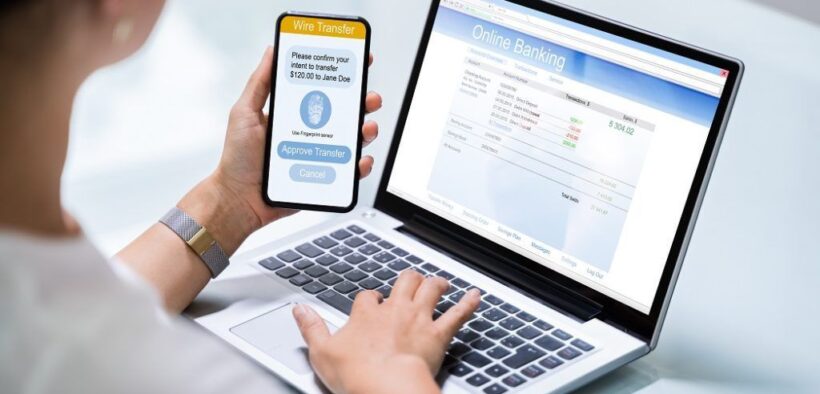Pros and Cons of Mobile Banking
Share

The findings of a modern-day survey show that Mobile gadgets account for almost 25% of visits to a bank website. The reason is genuinely the benefit and portability that the cell phone gives. But this consolation comes with a charge. Below are the pros and cons of cell banking that you should understand before accessing your account from your cell cellphone.
TAGGED UNDER: Banking

According to a new database released by way of the World Bank in April this year, almost 2.5 billion people, nearly one-half of the adult populace around the World, don’t have any formal get entry into our complicated financial system, not to mention its most effective layout – the banking system. This leaves a primary fraction of the negative population dependent on private cash creditors, who charge very high-interest prices, contributing to the vicious cycle of exploitation and poverty. Moreover, monetary exclusion of a first-rate part of the arena populace has also come about due to several other motives: poor financial institution infrastructure, long travel distance to banks, and the amount of office work required to open a bank account. These glaring issues have now been realized by way of economic institutions. The valuable banks of all growing countries are pushing reforms on a giant scale to financial institutions, especially the unbanked banks. In this large endeavor, technology is transforming into its finest hope.
READ MORE :
- Cool and Catchy YouTube Usernames for Your Channel
- Ringback Tones for T-mobile
- Sony Xperia Z1 Vs. LG G2 – War of the Super Droids
- Timeline and History of the Walkman
- A Summary of Intellectual Property Rights and its Various Types
Mobile banking is the most famous measure followed to bank almost half of the unbanked population. The surge of optimism surrounding this trendy generation with the immense capacity to alleviate billions of human beings from poverty has been fueled by the exponential boom in the range of cell subscribers throughout the globe, with growing economies like India and China leading the way. To give you an angle, Cisco’s recently posted “Visual Networking Index (VNI) Global Mobile Data Traffic Forecast Update” stated that by the end of 2012, the range of cellular devices inside the internationalization would exceed the World’s populace! If all is going nicely, it could be possible for cellular banking to convert the arena’s financial landscape and redefine the relations between banks and their customers, which are no longer handiest in growing international locations but also inside the evolved ones. While we look ahead to the cell banking revolution, we want to understand both sides and get a bigger attitude. Here, we analyze what is so best about this shape of banking and the difficulty we may encounter in its execution.
Benefits of Mobile Banking
There are various blessings to banking using mobile phones. The obvious is that it is a time-saving, no-queue method of banking in which nearly all banking-associated offerings can be accessed through the cell. It also offers services like ATM locator, far-off deposits, and cell payments to customers. The biggest boost to this era is the supply of smartphones, which have made our lives less complicated.
The mobile banking service provided by nearly all banks is free from fees. This means that the patron can handle problem-unfastened transactions without more expenses.
There are three approaches in which the offerings can be accessed from the cellular level, depending upon the cellular compatibility and its make. This makes cell banking easier for everyone. The first one is through SMS, wherein the balance data and banking passwords are despatched to the person through SMS. Secondly, a few banks have devoted software programs that may be downloaded on mobile to access financial institution accounts. Thirdly, mobiles with Internet browser capabilities can easily get the right to enter banking programs, like a PC.
The bank servers are encrypted for Wi-Fi transactions, which may be more secure than through stressed-out connections.
The account facts on the side of the account variety aren’t displayed on the Wi-Fi connection, which allows for more record protection.
Risks of Mobile Banking
As with any new era, mobile banking has its negative aspects. The major ones are listed below.
The biggest security risk in mobile banking is the non-encrypted servers of mobile phone carrier vendors. These servers make it very easy for a professional hacker to obtain account information or users’ debit and credit card data.
The messages acquired from the banks aren’t encrypted. This approach means that information should be easily breached while being transmitted through cell service.
If the mobile is stolen, any other individual may easily access the facts stored in messages.
However, mobile phones that use Internet browsers no longer have antivirus and are at a high risk of being hacked for sensitive facts.
With the accelerated smartphone usage and access to fast Internet on a cell phone, mobile banking was the next technological step. It certainly offers comfort and hassle-free account accessibility. But as far as data security is concerned, it leaves much to be preferred. If you question me, until banks give you a hundred cozy ways of cellular banking, it is best to apply it simplest while vital.








